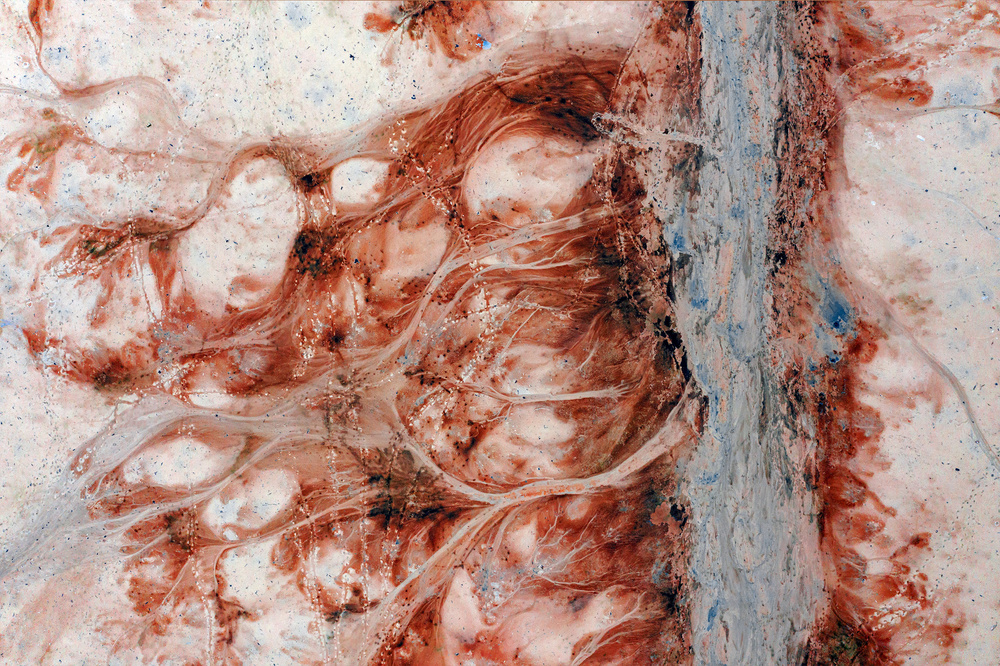SEARCH






|
|
|
|


Interview by Editor Michel Romaggi in collaboration with 1x member Jure Kravanja
Published the 10th of March 2021
Aerial shots can offer nearly abstract pictures. These two ribbons, one black and one green, moving side by side in a snowy white forest, make our imagination wander far away from the initial landscape..
That’s the feeling I often get when looking at this kind of picture.
I was very eager to learn more about drone photography.
So I asked Jure to tell us how he works.
Since when do you practice photography? When and what decided you to take aerial photos with a drone. What purpose did you aim this way?
I have been doing photography for roughly 15 years. From the very beginning, I was drawn to the bird’s eye view as a way of looking at motifs. Whenever I had the chance, I took photos from a plane or from a balloon. With the advent of drones, things have become much simpler, as you can take a picture with a drone virtually whenever you want, the handling is quite easy, and there are many creative options at your disposal.

'Dried and frozen lake Vrbje, Slovenia'
How do you usually choose your subject?
In what circumstances did you take this one?
As with classic photography, it is necessary to first get to know the feel of the terrain, get acquainted with it well. While doing that, all security and personal data protection rules must be observed. It often happens to me that I use up a whole battery for a single subject. Working on a motive with my classic camera would rarely require so much time and effort from me.
I took this specific photo in a beautiful Slovenian alpine valley. I let the flow of the river and the road take me to the setting that I judged to be the most ideal for a nice composition.
Can you tell more about the practice of photography with a drone? What equipment do you use? Which settings and so on … so that we can know better this specific and spectacular way of taking pictures?
As soon as we start operating a drone in the sky, we technically become pilots. This carries a lot of responsibility. It is therefore imperative that we learn all the safety rules and skills in advance, thus ensuring that our flights do not disturb or harm any living being. The European Community has a uniform method of training for drones, which must be carried out by each operator. The latter must also adhere to the "no fly zones", where it is not possible to fly with a drone (unless you obtain special permits and pass special exams). As an operator, you also need to know well your drone, its technical characteristics, and flight methods, ensuring that your aerial vehicle will always return safely to the take-off point.
I use two separate drones, namely DJI Mavic Pro 2 and DJI Mavic Pro Zoom. I mainly shoot RAW, and use white balance according to the light source, time and aperture according to the subject. ISA values depend on light intensity. I digitally process my photos in the camera RAW filter, and then in Photoshop.
Before ending this short Interview abut drone photography, can you tell us about you and photography, the place it takes into your life, Jure?
Although I started doing photography relatively late, it is a big part of my life today. Not a day goes by that I don’t spend taking or processing photographs, share them on social media, meet photo friends, or travel to interesting places. My friend Matej Peljhan and I founded the Institute for Photographic Therapy, within which we work with vulnerable groups in accordance with Art Therapy. Photography has taken me to many fascinating places, domestic and foreign alike, but Iceland is the country that stole my heart. So far, I have always used a classic camera there (I’ve been to Iceland several times), and I can't wait for the opportunity to capture the beautiful Icelandic landscape with a drone.
 | Write |